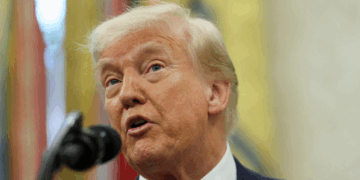Asurge in the number of trash-filled balloons sent by North Korea has led to repeated airspace disruptions, resulting in significant delays and safety issues at Seoul’s Incheon and Gimpo airports. These large, helium-filled balloons, often carrying propaganda leaflets, household waste, and other debris, have been launched across the Demilitarized Zone (DMZ), causing South Korean authorities to raise alarms over their impact on civilian air traffic.
The balloons, drifting into South Korean airspace, force air traffic controllers to divert or delay flights, particularly at Seoul’s major airports. While North Korea has long used balloon launches as a form of propaganda, the recent use of trash-filled balloons appears to be a deliberate effort to disrupt air travel and raise tensions. Local officials report that each incident requires coordination between military forces and airport authorities to ensure the safety of both incoming and outgoing flights.
South Korean authorities have condemned the balloon launches as reckless and hazardous, with many experts warning that they pose a significant risk to aircraft. The debris in the balloons could damage planes during landing or takeoff, where the risk of collision is highest. “This is more than just a political statement. It is a blatant disregard for aviation safety,” said an official from the Ministry of Unification.
Seoul has heightened surveillance along the DMZ, employing drones and radar systems to detect and intercept balloons before they enter controlled airspace. Despite these efforts, North Korea’s unpredictable launch patterns make it difficult to mitigate the threat fully. The international aviation community has also expressed concerns, with the International Civil Aviation Organization (ICAO) calling for immediate diplomatic measures to address the problem.
Experts believe that the trash balloon tactic is part of North Korea’s broader psychological warfare strategy, aimed at pressuring the South while evading direct military confrontation. As tensions on the Korean Peninsula remain high, these balloon disruptions could further strain relations between the two Koreas.
For now, passengers travelling through Seoul’s airports may continue to experience periodic delays as authorities grapple with this unique and growing threat from the North.








 India
India












